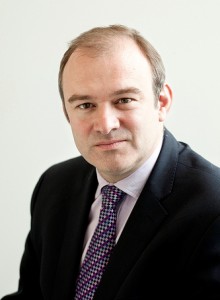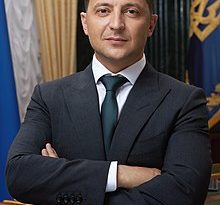Ed Davey – 2014 Speech at the Green Growth Summit II
Below is the text of the speech made by Ed Davey, the Secretary of State for Energy and Climate Change, on 3rd March 2014.
Friends and colleagues, it’s a pleasure to be here today for this second Green Growth Summit.
Let me start by saying thank you to all those who have helped bring us together today and to establish the Green Growth Platform: To the EU Corporate Leaders Group for organising this Summit and Green Growth Platform.
To the businesses, trade associations, academics and international agencies who have put their time and effort into the two Advisory Councils set up following our first Summit last year.
And we look forward to hearing your insights into how Europe’s decarbonisation can work for the climate and the economy, including energy intensive industries.
Particular thanks goes to the OECD whose Deputy Director, Helen Mountford, we look forward to hearing from about their work on green growth and the links with our own. And to the IEA whose Executive Director, Maria van der Hoeven, we are delighted to have here to address the crucial questions on energy prices and competitiveness.
Finally, I want to thank my friends in the Ministerial Green Growth Group for their enduring commitment to working together to explore, promote and pursue an ambitious and growth-enhancing EU low carbon agenda.
In particular, I am delighted to be able to announce that the Green Growth Group, including UK, France, Germany, Italy and Spain, have today agreed to a joint statement calling for an agreement at the March European Council to the key elements of a 2030 energy and climate package including, a binding domestic EU greenhouse gas target for 2030 of at least 40% and a binding EU level renewables target of at least 27%, that will not be translated into binding national targets.
This is a very important step forward, and a timely one.
SETTING THE SCENE – ECONOMIC & STRATEGIC CHALLENGES
Later this month, Europe’s national leaders will gather here in Brussels to seek to agree the EU’s 2030 energy and climate policy framework. The 2020 Framework has served us well.
But when it comes to investment decisions on energy projects that will last into the middle of the century and beyond, 2020 is fast disappearing in the rear view mirror.
The EU Emissions Trading System needs radical surgery to achieve all that it was put in place to do.
And next year, in Paris, world leaders will meet to agree a global and comprehensive climate change agreement.
But as we agree a 2030 framework, we must do so with our eyes open to the challenges ahead.
First, Europe is still feeling the fallout of the most serious financial and economic crisis our continent has experienced since World War Two.
After so much hard work to restore economic stability, securing the recovery remains a priority.
So we have to make sure that the 2030 framework delivers our ambitious climate and energy goals in the most competitive and cost-effective way.
Second, in recent years, European and North American energy prices have substantially diverged.
European gas prices are around three times higher than in the US, while industrial electricity prices remain roughly twice as high.
The IEA predicts that while this energy price gap should narrow, it is likely to remain significant for some time.
For most businesses, energy represents a small fraction of their production costs; 3% for UK and German manufacturers on average.
And European industry has many other areas of comparative international advantage, not least in energy efficiency.
But for certain energy intensives operating in a highly competitive market, this price divergence represents a new structural competitiveness challenge.
Against this economic backdrop, some argue that Europe cannot afford climate ambition, or that we should wait and see what others’ low carbon ambitions are first. I could not disagree more.
As the latest IEA analysis sets out, the price discrepancy between Europe and the US is primarily driven by the US shale gas boom on the one hand, and Europe’s expensive fossil fuel import dependency on the other.
So Europe could choose to abandon its entire low carbon agenda.
But it would barely scratch the surface of the problems facing certain energy intensive industries.
In fact, the Commission’s Impact Assessment found that a 40% domestic 2030 emissions target would only lower EU GDP by 0.15%.
And a brand new study my Department commissioned from an independent French consultancy, copies of which are here today, support these findings. This is all in the context of projected EU GDP growth by 2030 of 25%.
So the European problem for competitiveness, for Energy Intensive Industries, is not climate action.
It is the US shale gas revolution – and we must respond to.
Third, Europe is facing an unprecedented energy investment challenge.
Europe needs trillions of Euros of investment over the foreseeable future to replace a fleet of ageing power stations, and to strengthen our energy infrastructure.
This is about cold hard energy security, providing power for our businesses and homes, or put simply, just keeping the lights on.
And finally, Europe’s indigenous fossil fuel resources are in decline and import dependency is rapidly growing.
The IEA predicts that by 2035 we will need to import 90% of our oil needs and over 80% for gas.
Our fossil fuel import bill consumes more of Europe’s GDP than any other developed or major emerging economy.
And it is a major cause of Europe’s global trade deficit.
With demand continuing to spiral in developing countries, fossil fuel import prices are likely to remain high and subject to supply shocks and price volatility.
So our energy security is best served by minimising our exposure to the volatile global fossil fuel markets, enhancing our energy efficiency and maximising home-grown low carbon energy, as well as cleaner indigenous reserves, such as natural gas, to help ease the low carbon transition.
HOW SHOULD EUROPE RESPOND?
Europe’s response to these overlapping challenges needs to be smart and strategic.
For my part, I would like to begin by outlining three key things things that I believe should be part of a smart and strategic 2030 package.
And I very much look forward to hearing today from the Green Growth Advisory Councils and from you on how to solve some of these challenges, and to stealing the best ideas. First and foremost, Europe must give the commerical sector the long-term signals they need now to invest in our low carbon and energy infrastructure.
This means agreeing an ambitious 2030 domestic greenhouse gas target of at least 40% in the first half of this year.
Without early clarity over Europe’s 2030 climate ambitions, we risk delays to investments in essential energy projects, higher costs of investment capital and expensive carbon lock-in.
And since the best competitiveness hedge is securing a global climate deal, Europe should commit to consider in early 2015 whether to raise its emissions target in the light of pledges from others and our 2 degrees climate objective.
Second, we need to ensure that the 2030 package is cost-effective and cost-efficient.
A cost-effective package means stepping up the integration and interconnection of European energy markets so countries can buy clean, competitive, low carbon electricity from wherever it is cheapest.
So the 2030 package must be a vehicle for accelerating market integration and interconnection as a priority.
Ensuring we have gas and electricity networks modern enough and integrated enough to prevent European energy supplies being put at risk.
It also means urgently strengthening the ETS in order to drive down emissions and stimulate low carbon investments cost-effectively.
The current draft ETS legislation, is a welcome basis for discussion.
But we need to be bolder and move much faster to deliver the diversified, indiginous and lower carbon energy mix that we need – and at least cost.
And IEA analysis shows that even a CO2 price of €20 per tonne would only represent a few percentage points on average industrial electricity prices – a minor impact compared to the price shock of shale.
And third, as part of a wider industrial strategy for Europe, we must develop a energy and climate package for those energy intensives industries genuinely at risk of carbon leakage.
This means providing support through the ETS and state aid framework to help them to compete during the low carbon transition. This support will need to be focused on those sectors at significant risk to ensure they get the level of protection they need.
But in parallel, we must develop the incentives, financing and regulatory frameworks that deliver credible, cost-efficient decarbonisation pathways for these energy intensive sectors over the medium-term.
Europe‘s paper and pulp industry, for instance, have done pioneering work to identify the breakthrough technologies that will deliver dramatic cuts in industrial energy usage by completely re-inventing their processes.
Europe has to get behind these sorts of game changing innovations, learn from them and apply them across other industries
CONCLUSION
Colleagues, through an early, smart, cost-efficient and ambitious 2030 package, Europe can harness the links between competitiveness, security and climate change, and meet Europe’s objectives in all three.
I very much look forward to working with you over the coming months under the Green Growth Platform, so we can develop and deliver an ambitious 2030 package that is good for the climate and the economy.
Thank you.


